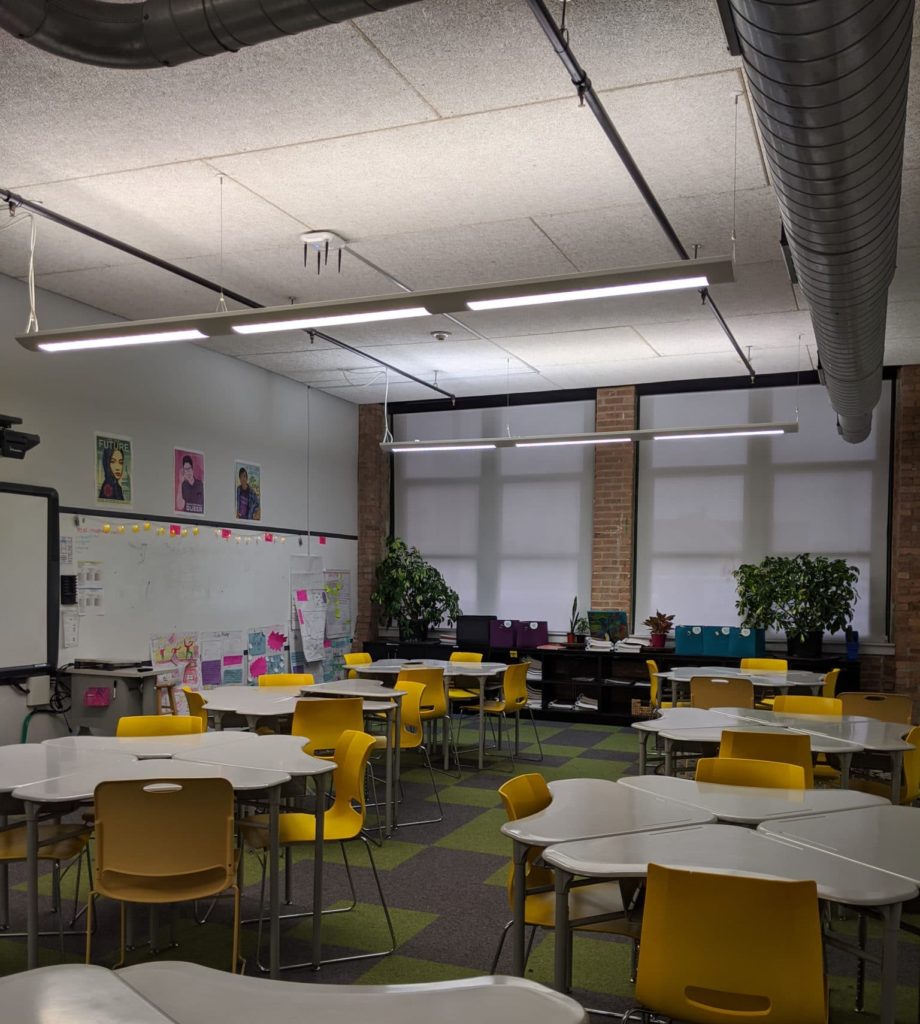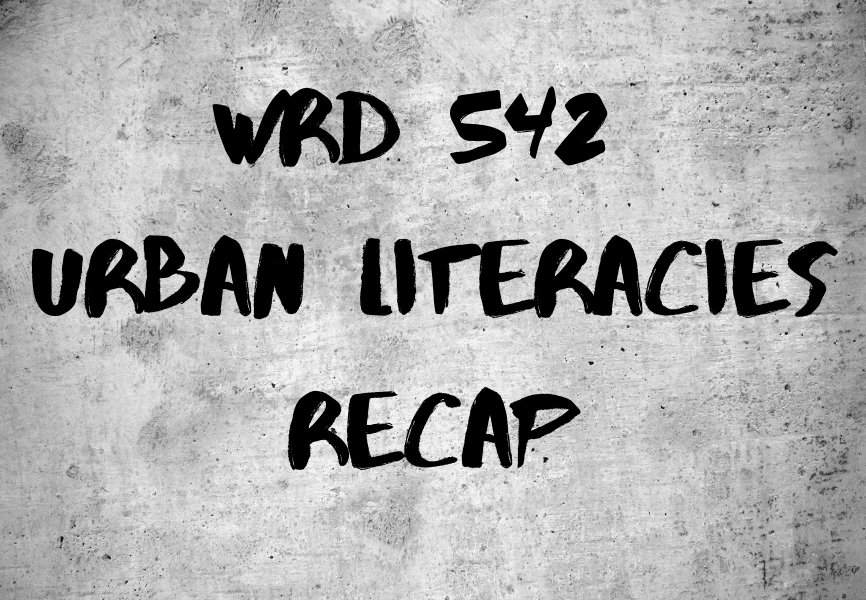Many MA in WRD students are pursuing careers in education, with the department offering a variety of courses to help them achieve their goals. One of these courses, WRD 542 Urban Literacies, offers students the chance to “explore the multiple definitions of literacy with a special emphasis on adult literacy in an urban environment,” both in the classroom and at professional sites. The course was taught last quarter by Dr. Lydia Saravia, and we’ve caught up with the class to see what they accomplished in the last few months.
In partnership with the Instituto Health Sciences Career Academy (IHSCA), students volunteered for tutoring services and a range of other opportunities, including classroom reading groups, after-school clubs, and behind-the-scenes resource development. Two students, Madeline Crozier and Walt Stallings, were both highly positive when asked about their experiences.

“My personal experience was great,” said Walt. “The days I happened to be at the school,students were working on revisions of personal essays and also learning about rhetoric. I was able to immediately jump in and work with small groups of students, since these assignments happened to align with everything I’ve studied at the university level.”
“This class pushed me to confront how the education system sponsors and supports certain types of learners while under-serving and underrepresenting diverse groups of students and learners,” said Maddy.
Walt in particular was quite open about the details of his work.
“I always find student perspectives on the work they’re doing to be interesting. The particular teacher we worked with at the site had a very student-forward curriculum and worked really hard to create assignments that centered the students’ individual agency. The personal narratives were particularly interesting to me because students were reflecting on an assignment in which they got to teach other students in the class. Every student I worked with came away from the assignment with feelings and theories about effective and ineffective teaching methods. A lot of what the students reflected upon mirrored what we debate in many of the teaching-based WRD classes. Students talked to me about grammar, instructor feedback on their writing, and the advantages they perceived in being able to choose their own topics of study.”
One thing that the MA students were vocal about was their appreciation of literature in the class.
“Reading books such as Reconceptualizing Curriculum, Literacy, and Learning for School-Age Mothers by Abigail Kindelsperger and Heidi Hallman, which told the stories of high school-age mothers and their educations in Chicago, broadened my understanding of different students’ experiences,” said Maddy. “Dr. Kindelsperger even visited our class to discuss her research methods and teaching experiences in Chicago-area high schools, serving as a role model for those who want to teach and conduct research in the future.”
“The course introduced me to a ton of the preeminent literature on raciolinguistics and other connected and important fields,” said Walt. “Everything we studied in the course was immediately applicable to the broader study of literacies and language and also to being an urban citizen in a global city like Chicago. The course furthered my resolve to advocate for using students’ prior knowledge and learning incomes as cornerstones of the classroom.”
We also asked what they would share with others about taking the course, to which they had this to say.
“The focus on urban youth literacy makes this course extremely valuable for anyone who wants to gain experience working with high school students or sees themselves teaching high school,” said Maddy. “However, the value also extends for those who want to teach at two- or four-year institutions because you have a chance to learn about the literacy development that can occur right before students tend to enter college. Both the readings and the experiential learning work together to create a well-rounded body of knowledge about nondominant and dominant literacies, multilingualism in the classroom, and critical urban education.”
“I think this class is important,” said Walt, “because it broadens the scope of what traditional academia has deemed worthy of academic study in the fields of language and literacies. The course also pushes us to ask important questions about who has a say in these studies, who benefits from them, who gets to participate in them, and who has been traditionally excluded from them. The course encourages us to question hierarchical and deficit-based interpretations of language and communication. I think these are all things that should be studied and deeply considered by anybody who is pursuing a career in education or in the public sector.
“On top of that,” he continued, “Lydia is a fantastic professor who brings the best snacks of anybody in the department.”
Lydia herself had much to say on the class from her perspective as a teacher and expressed praise for the course‘s community partner.
“Working with Ms. Sabrina Anfossi-Kareem (a former student of mine) was probably the highlight of the course. She is a masterful teacher, and we were lucky to work with her and the IHSCA students. My hope is that in the future, she and I can be much more purposeful in our collaboration and with our collaboration with the Steans Center, who were also helpful and accommodating. I learned so much from the 542 community members: former, current, and future educators themselves. It felt like a community of learners and educators coming together to continue learning best practices when thinking about literacy in and around Chicago.”
